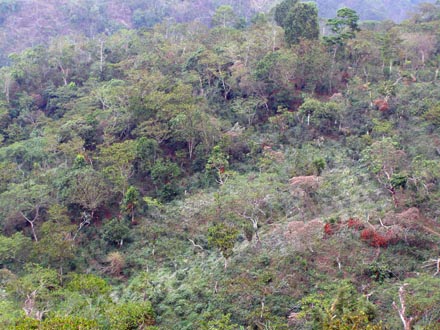Summary
Investigator: Stacy Philpott, Dept. of Environmental Sciences, University of Toledo, Toledo, Ohio
Project location: Chiapas, Mexico
Many conservation organizations and ecologists have promoted organic shade coffee farming as a direction towards agroecosystem sustainability and protection of tropical biodiversity. Coffee was traditionally grown under a native shade tree canopy, and ecological studies demonstrate that organic, shade-grown coffee provides much-needed habitat for migratory birds, mammals, and arthropods.

However, in the past 40 years, agronomists have consistently advised farmers to intensify coffee systems, leading to the removal of shade trees and adoption of agrochemical use to boost production and diminish problems with pests and fungal diseases. There is some evidence that such intensive conventional farms do experience some increases in productivity, but from an ecological standpoint, there is still much debate about the possible trade-offs between short-term increases in yields and the long-term consequences of intensification. Furthermore, little is known about how the simplification of the shade canopy (e.g. removal of trees, reduction in the diversity of shade tree species and loss of canopy cover) will affect arthropod populations, predator-prey interactions, plant damage, and crop yield in organic coffee farms, in particular.
We will investigate the impacts of shade tree thinning in an organic coffee plantation in Southern Mexico. Specifically, we will examine how farmer-motivated changes in shade management influence arthropods in the farm including natural enemies and herbivores, and how change in shade management has affected levels of insect damage and yields.
The objectives of the research are to:
- Determine the effect of shade canopy removal on abundance and diversity of natural enemies and on herbivorous pests in organic coffee plantations;
- Determine effect of shade canopy removal on coffee plant damage (e.g. herbivory, coffee leaf miners);
- Determine the effect of canopy removal on coffee yields;
- Disseminate information about biodiversity and ecosystem services in relation to canopy management to farmers, farm workers, farmer organizations, research institutions, and certification agencies.
